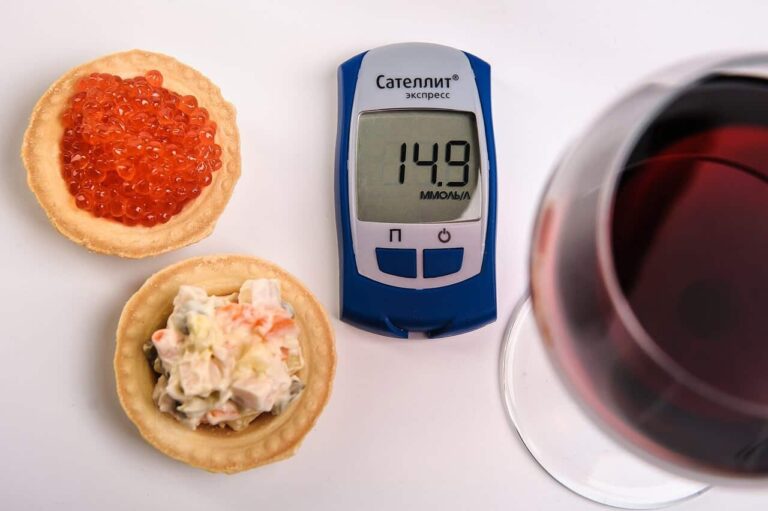Unless you’ve been living under a WiFi-less rock, you’ve heard the buzz. It’s on social media, it’s in celebrity gossip, it’s the talk of the town. The word is Ozempic. This drug (and its cousins, Wegovy and Mounjaro) has exploded into the mainstream as a revolutionary tool for Type 2 diabetes and weight loss.
We see the headlines, we hear the stories, and as people living with Type 1 Diabetes, we’re left standing on the sidelines with a giant, blinking question mark over our heads:
Wait a minute… is this for me, too? Can this actually help with the relentless, 24/7 tightrope walk of T1D?
The short answer is complicated. The long answer is what this guide is for. Let’s cut through the hype, demystify the science, and have an honest conversation about the Ozempic elephant in our T1D room.
CRITICAL DISCLAIMER: I am not a medical professional. I am a person with Type 1 Diabetes navigating the world just like you. The information here is for educational and informational purposes ONLY and is based on extensive research and community experiences. Ozempic is NOT FDA-approved for Type 1 Diabetes. Never, ever start, stop, or adjust any medication without the direct supervision of your endocrinologist. This is not DIY territory.
How Does Ozempic Actually Work? The “Air Traffic Controller” Analogy
Ozempic (semaglutide) is a GLP-1 receptor agonist. That sounds complex, but let’s break it down. Think of GLP-1 as an air traffic controller for your gut and brain.
Normally, when you eat, “food planes” (carbs, proteins, fats) start landing in your “stomach airport” all at once, ready to be processed and sent into your bloodstream. For a T1D, this can feel like a chaotic rush hour, often leading to a sharp, hard-to-manage blood sugar spike.
Ozempic, our new air traffic controller, steps in and says, “Hold on, folks. Let’s do this in an orderly fashion.” It does four key things:
- It Slows Down the “Landings” (Gastric Emptying): It tells the “food planes” to circle the airport for a while instead of all landing at once. This means food digests more slowly, leading to a more gradual rise in blood sugar instead of a sharp spike.
- It Quiets the Control Tower (Reduces Appetite): It sends signals to your brain that the airport is busy and you don’t need to accept any more flights right now. You feel fuller, faster, and for longer.
- It Shuts Down the Unhelpful Backup Airport (Suppresses Glucagon): It tells your liver (which can release stored sugar) to chill out and not dump extra glucose into your already crowded airspace.
- It Can Stimulate Insulin (But Here’s the T1D Catch): In a person with Type 2 Diabetes, GLP-1 also signals the pancreas to release more insulin. For us? Our pancreas has retired. It’s not making insulin. So, we don’t get this benefit.
This is the billion-dollar question: If it doesn’t make our pancreas work again, how can it possibly help? The answer lies in the first three points. It helps manage the other variables, making the insulin we do take more effective and our lives a little less chaotic.
The interaction between GLP-1 agonists and the T1D body is an area of ongoing study.
The Potential Upside: Why Some T1Ds are Curious
While it’s “off-label” (not officially approved), some endocrinologists are prescribing Ozempic to certain T1D patients. Here are the potential benefits they’re hoping to achieve:
Taming the Post-Meal Monster
For many of us, the hardest part of any meal is the inevitable spike two hours later. By slowing digestion, Ozempic can smooth that mountain into a gentle hill, making it easier to match your insulin dose to your food.
The “Insulin Sparing” Effect
Because you feel fuller and eat smaller portions, and because your liver isn’t adding extra sugar to the mix, you may find you need less bolus (mealtime) insulin. For anyone who feels like they’re constantly chasing highs with correction doses, this can be a huge relief.
Breaking the Insulin-Weight Gain Cycle
Let’s be honest: insulin, the hormone that keeps us alive, can also promote weight gain. It’s a frustrating biological trap. By significantly reducing appetite and helping with portion control, Ozempic can be a powerful tool for T1Ds who also struggle with insulin resistance or stubborn weight.
The Red Flags: The Risks Are Real and Serious
This is not a risk-free proposition. The side effects are real, and for a T1D, the stakes are higher.
The Nausea Factor (And Other GI Joys)
The most common side effects are gastrointestinal: nausea, vomiting, diarrhea, constipation. For some, these are mild and temporary. for others, they are severe enough to stop the medication. Slowed digestion sounds great in theory, but feeling constantly, miserably full is another story.
The Hypo Hang-Up
If you’re taking the same amount of mealtime insulin but your food is digesting much more slowly, you have a recipe for a nasty, unexpected low blood sugar. This requires careful coordination with your doctor to adjust your insulin doses, potentially changing your bolus timing or ratios.
The DKA Danger: A Critical Warning
This is the scariest risk. If a T1D on Ozempic feels good and reduces their insulin dose too much (especially their basal/background insulin), they can be at risk for euglycemic DKA (eDKA). This is a dangerous state where you can develop ketones and DKA even with a normal-looking blood sugar. This is why self-adjusting is off the table.
The Big “But”: Who Is This Really For?
Ozempic is not a one-size-fits-all solution for Type 1 Diabetes. Based on clinical discussions and community experiences, it seems to be considered most for T1Ds who fit a certain profile:
- The T1D with Significant Insulin Resistance: Sometimes called “double diabetes” or Type 1.5, this is when a person with T1D also develops insulin resistance, a hallmark of T2D. They require large doses of insulin and often struggle with weight.
- The T1D with Obesity or Stubborn Weight Gain: For those where diet and exercise haven’t been enough to manage weight, Ozempic can be a powerful medical intervention.
- The T1D with Extreme Post-Meal Spikes: For individuals whose blood sugar is incredibly volatile after eating, the gastric-slowing effect can be a game-changer for stability and time-in-range.
It is generally not considered for T1Ds who are lean, insulin-sensitive, and already have good glycemic control.
Final Thoughts: A Powerful Tool, Not a Magic Cure
So, is Ozempic a game-changer for Type 1 Diabetes? For the right person, under the right medical supervision, it has the potential to be. It can be a powerful extra tool in an arsenal that often feels too small.
But it is not a cure. It is not a replacement for insulin. It is not an escape from the daily work of living with this condition.
Ultimately, it represents a conversation—a nuanced, data-driven discussion between you and your endocrinologist. It’s a decision, not a default. It’s about weighing the potential for a smoother ride against the very real risks of a new and powerful medication. And that’s a path only you and your doctor can walk together.











